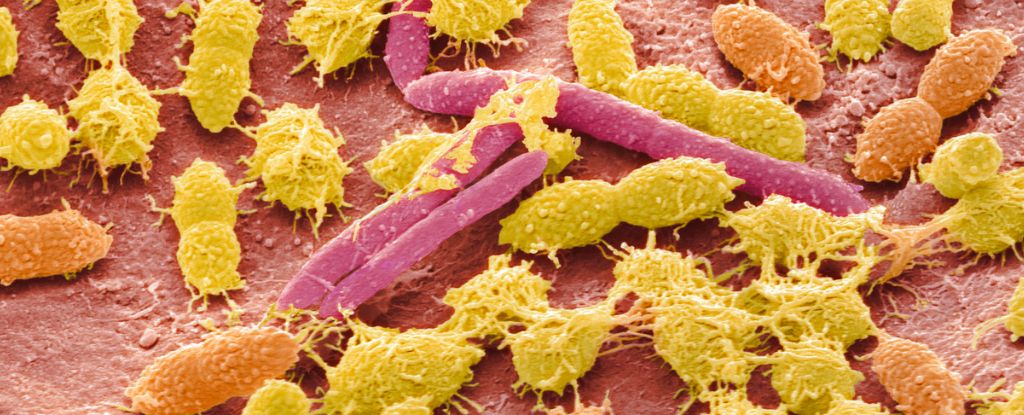Looking into the collection of microorganisms that reside within us, scientists have stumbled upon what appear to be a completely new group of virus-like entities. “It’s incredible,” said University of North Carolina cell biologist Mark Peifer, who was not involved in the study, to Elizabeth Pennisi at Science Magazine. “The more we look, the more unusual things we discover.” These enigmatic pieces of genetic material do not have any known sequences or structural similarities to other biological agents. Stanford University biologist Ivan Zheludev and his team suggest that their unusual finding may not be viruses at all, but rather a completely new group of entities that may help bridge the ancient gap between the simplest genetic molecules and more complex viruses. “Obelisks represent a diverse class of RNAs that have populated human and global microbiomes without being noticed,” the researchers write in a preprint paper. Named after the highly symmetrical, rod-like structures formed by their twisted lengths of RNA, the Obelisks have genetic sequences that are only about 1,000 characters (nucleotides) in size. This brevity is likely one reason why they have gone unnoticed until now. In a study that has yet to be peer reviewed, Zheludev and his team analyzed 5.4 million datasets of published genetic sequences and identified almost 30,000 different Obelisks. They were found in about 10 percent of the human microbiomes that were examined. In one dataset, Obelisks were present in 50 percent of the patients’ oral samples. Furthermore, different types of Obelisks seem to be present in different parts of our bodies. “This supports the idea that Obelisks might be residents of these human microbiomes,” the researchers explain. The team was able to isolate one type of host cell from our microbiome, the bacterium Streptococcus sanguinis – a common microbe in the human mouth. The Obelisk in these microbes had a loop 1,137 nucleotides long. “Although we do not know the ‘hosts’ of other Obelisks,” Zheludev and his colleagues write, “it is reasonable to assume that at least some may be present in bacteria.” Putting aside the question of the Obelisks’ source, all of them seem to contain codes for a new class of protein that the researchers have named Oblins. Instructions for producing these proteins seem to account for at least half of the genetic material in the Obelisks. Since these proteins are very similar across all the Obelisks, researchers suspect they may be involved in the entity’s replication process. This ability to code for proteins sets them apart from other known RNA loops called viroids, but they also do not appear to have the genes to create protein shells that RNA viruses, including COVID-19, live within when they are outside of cells. They are also much larger than other genetic molecules that exist within cells, from plants to bacteria, known as plasmids, which are more commonly made up of DNA. However, Zheludev and his team were unable to identify any impact of the Obelisks on their bacterial hosts, or a means by which they could spread between cells. “These elements might not even be ‘viral’ in nature and might more closely resemble ‘RNA plasmids,'” they conclude. This research has been uploaded to the preprint server, bioRxiv.
‘Obelisks’: A Totally New Form of Life Found in The Human Digestive System














:max_bytes(150000):strip_icc()/GettyImages-2219202040-81d9976c56a74319b5b19123653ff121.jpg)